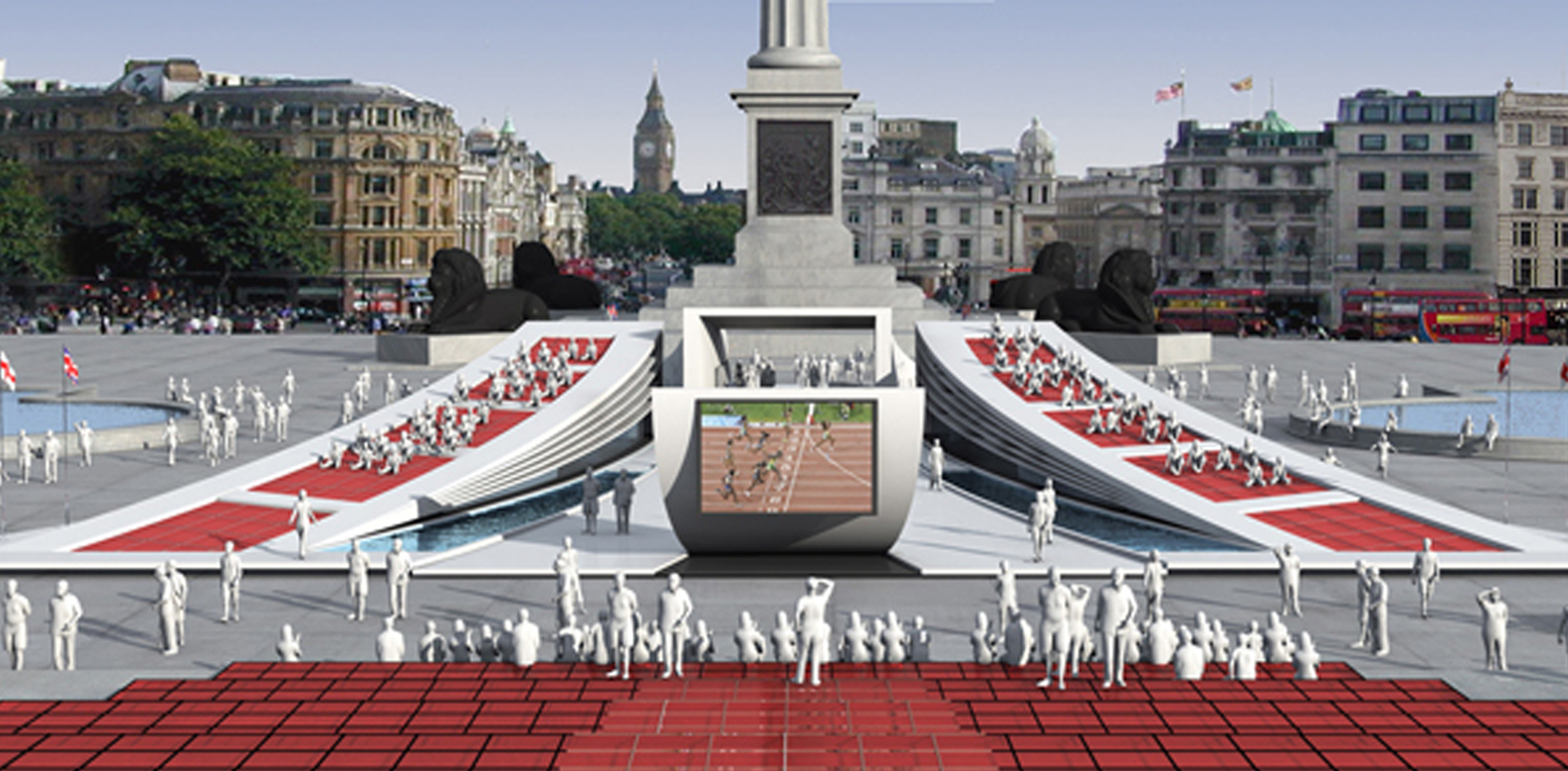
COMPETITION AC-CA FOR THE “London Information Pavilion” LONDON UNITED KINGDOM
- Stateon drawing board
- OwnerAC-CA
- Size25 m2
Architects in this present competition have to balance between the square’s grandeur and the glory of the Olympic Games, between the ephemeral duration of the Games (they last only for a few weeks) and the timeless square.
Trafalgar Square has a monumental axis that joins Nelson’s statute with the steps that lead to the National Gallery walking along the fountains. This axis constitutes the movement path for hundreds of visitors of Trafalgar square everyday.
Architects in this present competition have to balance between the square’s grandeur and the glory of the Olympic Games, between the ephemeral duration of the Games (they last only for a few weeks) and the timeless square.
Trafalgar Square has a monumental axis that joins Nelson’s statute with the steps that lead to the National Gallery walking along the fountains. This axis constitutes the movement path for hundreds of visitors of Trafalgar square everyday.
By placing our construction on that axis we symbolize the integration of the great importance of the Games in the life and history of London. With this gesture we symbolically integrate the Games with the city’s history. There will be an entrance-gate where the visitor will pass as soon as he will issue his ticket, a symbolic entrance to the games.
Olympic Games have been and still are, since the ancient years, an initiation ceremony. The gate of our pavilion will signal this transition, the passage, from uninitiated to initiated designating the importance of the event.
The visitor will issue his ticket and will walk through the gate, thus becoming initiated in the Olympic Games. The gate frames Nelson’s statute from one side and the National Gallery on the other, placing the visitor not only in the Olympic Games but also in the city that has the honour to organize them.
As soon as the visitor crosses the gate there is the altar with the sacred flame. By placing the sacred flame in the centre of our pavilion, in the centre of Trafalgar square and in the centre of London we transfer the Olympic spirit from the stadium of ancient Olympia to the stadium of London and finally to the city of London.
Trafalgar Square is a very important and historical square. Therefore we base our whole construction on an independent base, avoiding any construction work on it. Two wings are elevated from the base. At the roofed spaces of these wings we place all the essential facilities of the pavilion, offices, information area, souvenir shop, café and ticket box.
Visitors can climb up upon the wing chambers, sit on them and watch the Olympic Games through the big screen that we place towards the stairs that lead to the National Gallery. The big screen is placed at the end of the visitors’ eye view and in the same axis with the Nelson’s statue, the pavilions altar and the National Gallery. The screen will show highlights of the Olympic Games towards all directions, thus helping all visitors sitting either on the chamber wings or the steps that lead to the National Gallery or anywhere in Trafalgar Square to enjoy and participate in the events. There will be a sitting area for visitors in order to watch the Games through the displays either on the top of the two wings or on the stairs that lead to the National Gallery by creating a type of amphitheater in the heart of the square.
The two wings emerge from the gate/frame and protect the sacred flame of the Olympic Games. The pavilion we designed dynamically becomes part of the Trafalgar square taking into consideration the environment. Although we recognize the pavilion’s ephemeral existence, we also consider its importance, knowing that from now on it will be a part of the city’s history.









